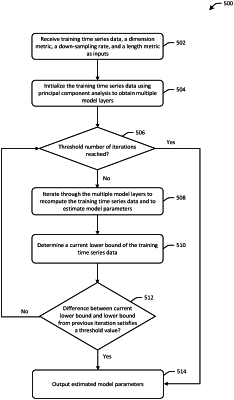| CPC G06N 7/01 (2023.01) [G06F 17/15 (2013.01); G06N 20/00 (2019.01)] | 12 Claims |

|
1. A method for modeling a multivariate time series to assess time series data indicative of a machine or machine component's operational state over a period of time to detect and localize potential operational anomalies, comprising:
receiving time series data as training data;
training a machine learning model using the training data, wherein the machine learning model comprises multiple layers and utilizes operates as a deep convolutional factor analyzer having linear Gaussian nodes, each of the Gaussian nodes representing a variable at a particular time in a particular layer, wherein variables at a bottom layer are independent and variables at higher layers gain temporal and spatial dependency through up-sampling and convoluting variables at each layer with variables of the next higher layer, wherein the training comprises:
initializing the training time series data using principal component analysis to obtain multiple layers of the machine learning model;
iterating through the multiple layers of the machine learning model to recompute the training time series data and to estimate output parameters;
determining that output criteria are satisfied; and
outputting the output parameters associated with a most recent iteration;
receiving, by the trained machine learning model, multivariate time series sensor data as input; and
detecting an anomaly in the sensor data using the trained machine learning model.
|